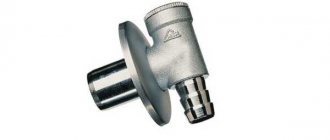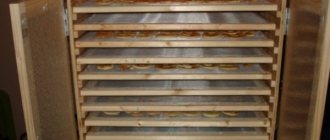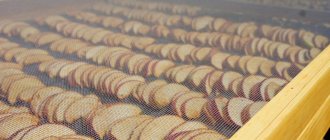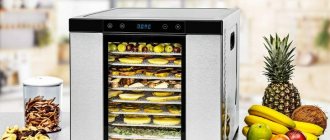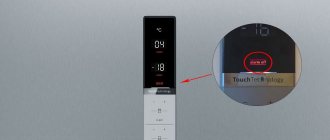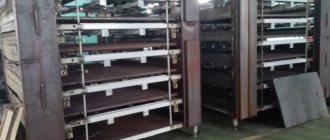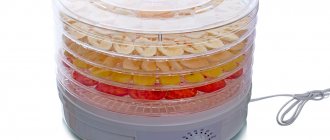Have you opened the refrigerator to get something to eat and suddenly discovered that a fair amount of water has collected under the fruit and vegetable drawers? You wiped it once, then again, but the water appears again and again. If you look closely, you may have noticed ice build-up in the area of the refrigerator drainage hole. There may also be an unpleasant odor in the refrigerator. What is this? Breaking?
Let's say right away that the presence of moisture inside the refrigerator compartment is only permissible on the back wall and only for refrigerators with a drip defrost system. It shouldn't be under the drawers at all. However, if you do find water in the refrigerator compartment, this does not always indicate a breakdown of any component of the unit. In some cases, this problem can be fixed by yourself.
Determine your refrigerator type
In order to understand the reason for the appearance of water under the fruit and vegetable drawers inside the refrigerator, first find out the structure of the refrigerating chamber of your unit. In modern two-chamber refrigerators (whether your refrigerator is a foreign brand Bosch, Samsung, Indesit or a domestic one - Biryusa, Atlant) it can be of two types:
- With drip defrosting system. This type includes refrigerator models with the so-called “crying back wall”. They work as follows. The evaporator of the refrigeration compartment is located behind the rear wall of the chamber. During the cooling cycle, it and the rear wall of the chamber are covered with frost. When the set temperature in the refrigerator compartment is reached (usually from +4°C to +8°C), cooling stops and the temperature of the evaporator and rear wall rises, tending to the values in the chamber. As a result, the frost begins to melt and droplets of water form on the back wall of the refrigerator compartment, which flow into the drain hole at the bottom of the chamber. This cycle is called defrost. Then the moisture flows through the outlet hose into a special tank, where it is completely evaporated. The reservoir is located directly above or next to the refrigerator compressor.
- With No Frost system. In refrigerators with a No Frost system in the refrigerator compartment (also called Full No Frost, i.e. complete No Frost), there is no evaporator in the refrigerator compartment. Its cooling occurs due to the evaporator of the freezer. The fan located behind it forces air from the freezer and refrigerator compartments through the evaporator. Passing through it, the air is cooled and supplied to the products through a system of channels. In this case, most of it is sent to the freezer, and a smaller part is sent through an additional channel to the refrigerator. The flow of cold air into the refrigerator compartment is regulated by a special air damper. It closes using a reed sensor when the set temperature in the chamber is reached (from +4°C to +8°C) and opens again when the temperature rises.
Why does water accumulate on the refrigerator shelves?
Why is condensation in the form of water droplets that forms on top and on the shelves of the refrigerator dangerous? High humidity in the chamber will inevitably lead to mold. It’s unpleasant to take food when a cold drop of water drenches your hand from the ceiling. Water was also noticed on the shelves, why?
Excess moisture may appear if liquid foods are stored in open containers, or if a bowl of soup is placed in the chamber to help it cool faster. It is necessary to check the door seal again, especially at the top. Why does water appear on the refrigerator shelves?
- improper operation of the device;
- the door remains open for a long time;
- The thermostat is set too low.
If this is not the case, everything has been checked and corrected, but water accumulates on the shelves of the refrigerator; a specialist can explain why this is happening. He will eliminate the reasons.
Drip defrost system: we eliminate the cause of water in the refrigerator compartment ourselves
1. Drain hose or hole is clogged. If water regularly accumulates in a refrigerator with a “crying” evaporator underneath the fruit and vegetable drawer, then most likely the drainage is clogged. Its purpose is to remove melt water from the refrigeration compartment into a special tank located near the compressor. Drain blockages occur due to the characteristics of the drip defrost system: dust, crumbs, food residues, etc. can get into the drainage hole along with drops of melt water (which can cause an unpleasant odor in the refrigerator). When the drain is clogged, the water cannot escape. It stands in the drainage, and the excess flows to the bottom of the refrigerator, just under the drawers. During the cooling cycle, the water in the drain often freezes and ice forms in and around the drain hole. Ignoring a clogged drain hole for a long time can lead to freezing of the refrigerator compartment evaporator (it will not have time to thaw) and loss of cooling capacity. At the same time, the refrigerator compressor will turn off less often to compensate for the lack of cold.
In order to restore normal operation of the refrigerator, you should clean the drain hole.
Below are two possible cleaning schemes that should be applied sequentially. Scheme No. 1. Cotton swab + syringe
- Unplug the refrigerator. Before starting work, unplug the refrigerator and remove the fruit and vegetable drawers from it.
- Clean the drain hole. If there is no ice around the drainage hole, try clearing it with a cotton swab or similar non-sharp object. Many models include a special device designed for this purpose.
- Flush the drain. Take a small syringe with warm (not hot!) water and squirt water into the drain hole several times. If the water successfully drains into the condensate collection tray, congratulations, the blockage has been eliminated.
If these actions do not bring the desired result, and all the water from the syringe pours back into the refrigerator, most likely the drainage hose is frozen, and you cannot do without completely defrosting the refrigerator.
Scheme No. 2. Defrost the refrigerator and, if necessary, use wire
- Defrost the refrigerator and repeat cleaning and syringing the drain. To do this, remove food from the refrigerator and leave it turned off with the door open for 8-12 hours. After defrosting, repeat the procedure of cleaning and syringing the drain.
- Clean the drain channel using a wire. If water still does not flow into the condensate pan, take a thin wire and use it to clear the drain. In this case, you need to act as carefully as possible so as not to damage the drainage hose and the plastic of the refrigerator. Moreover, you should try to clean it with a wire both from the side of the drainage hole from inside the refrigerator and from the opposite end of the drainage hose. As a rule, this method allows you to achieve a positive result. Otherwise, call a professional refrigerator repair technician.
2. Incorrect installation of the refrigerator. If the refrigerator is not installed level, the door may not fit tightly. Because of this, warm air will enter the refrigerator compartment, and the unit, trying to compensate for the lack of cold, will turn off less often. Infrequent outages can cause ice to form on the back wall of the refrigerator compartment and around the drainage hole until it completely freezes. During rare defrost cycles, the drain hole will not be able to cope with the increased amount of water (or the moisture will not drain at all if the drain is frozen), and water will collect in the refrigerator compartment below the drawers. In addition, the water collection tank may also not be able to handle the amount of water, and then you will see a puddle under the refrigerator. To fix the problem, you need to install the refrigerator strictly at level.
If cleaning the drainage hole and adjusting the level did not bring results, and water still accumulates in the refrigerator under the drawers, most likely there is a breakdown, the elimination of which will require the intervention of a professional technician.
Video: Cleaning the refrigerator drain hole
If the water comes through normally on the other side, then the blockage has been fixed. If the water comes back, you should defrost the entire refrigerator. Next, the drain is cleaned again with an enema. If you can’t solve it, you need to call a specialist.
See also: Corner buffet for the kitchen: types and features, design, design ideas, tips.
Using a cable
If you don’t want to call for outside help, you can use a rougher cleaning method. For example, using a special flexible cable. One end must be inserted into the drainage hole and ensure that it comes out on the other side. However, it is advisable to carry out the procedure after the refrigerator has been defrosted.
If you don’t want to call for outside help, you can use a rougher cleaning method.
See also Corner countertop for the kitchen: types of joints, varieties, useful tips for care and installation.
Incorrect installation
Thawed water often accumulates in the refrigerator if it cannot get into the drainage hole due to the fact that the appliance is tilted. There is nothing complicated in adjusting the new models. The legs can be installed even with an incorrectly poured floor manually. It is advisable to use a building level for this. In older models, the legs do not have this function. You can add a small piece of paper. You should also use a building level.
Thawed water often accumulates in the refrigerator if it cannot get into the drainage hole due to the fact that the appliance is tilted.
See alsoInterior of a small living room-kitchen: stylistic design solutions
Seal wear
A refrigerator door that won't close can also be a potential cause of water leaks. The cooler may simply not be able to cope with the heat load that is constantly coming from outside. This problem especially appears in the summer. This situation can happen with a new refrigerator. The seal can simply be deformed. Therefore, during delivery, it is imperative to inspect even this small detail.
A refrigerator door that won't close can also be a potential cause of water leaks.
There are several possible solutions.
1. Inspect the seal, clean it of debris and crumbs. Even this simple step can significantly improve the seal. 2. Replace the seal. The procedure is not complicated; you can purchase it at any construction hypermarket.
In the worst case, you can call a specialist; the service is not expensive and will not take more than 10 minutes.
See alsoKitchen design with an extendable dining table
Possible breakdowns of refrigerators with a drip defrosting system
More than 55,000 users have already entrusted the RemBytTech workshop with the repair of their refrigeration units, and the situation with the appearance of water at the bottom of the refrigerator compartment under the fruit and vegetable boxes is painfully familiar to us. Based on the data from the repairs performed, we have collected the most common breakdowns of refrigerators with a “crying” evaporator, when water collects inside the refrigerator under the drawers, see the information we collected below.
Door seal - from 1200 rubles.
The rubber seal of the refrigerator compartment does not fit tightly (due to damage or natural wear), because of this, warm air gets inside the refrigerator. The unit, trying to eliminate excess heat in the refrigeration chamber, begins to work, almost without turning off. As a result, the back wall of the refrigerator does not have time to thaw, the drainage hole freezes and a large amount of water forms inside the refrigerator compartment.
Signs
In addition to water at the bottom of the refrigerator compartment, the following symptoms, one or more, are observed:
- The refrigerator compressor rarely turns off;
- the refrigerator freezes food from time to time;
- A uniform layer of ice has formed in the area of the drainage hole and on the rear wall of the unit, which does not completely thaw.
How to fix
The seal needs to be replaced.
Temperature sensor - from 1400 rubles.
The temperature sensor has broken down and incorrectly “informs” about the temperature in the refrigerator compartment. Because of this, the refrigerator motor turns off later than necessary. As a result, the refrigerator compartment freezes the food, and ice forms on the back wall of the chamber. The tube for draining melt water also freezes. When the refrigerator turns off, the ice melts and a lot of water forms. Since the drain is frozen, the melt water has nowhere to go except to accumulate under the fruit and vegetable drawers in the refrigerator compartment.
Signs
In addition to water at the bottom of the refrigerator compartment, the following symptoms, one or more, are observed:
- The refrigerator compressor rarely turns off;
- the refrigerator freezes food from time to time;
- A uniform layer of ice has formed in the area of the drainage hole and on the rear wall of the unit, which does not completely thaw.
How to fix
The temperature sensor needs to be replaced.
Water accumulates under the drawers in the refrigerator
The cause of severe icing with the formation of water in the freezer compartment of the refrigerator is a door that is not tightly closed. But more often it happens that water leaks from the bottom cabinet of the refrigerator when the cooling circuit is not working. What to do? Urgently call repairmen and save products by all available means.
If the refrigerator is equipped with drip defrosting, the likely reason why water collects at the bottom is freezing or clogged drainage. If you are unable to clean the tube with a syringe, a special brush will help, but you need to be careful - the material is fragile. If the tube is frozen, it is better to defrost the refrigerator completely.
Water accumulation areas
One of the useful inventions of our time is refrigeration equipment, which allows you to keep food fresh and make preparations. Expanding the functionality of devices from famous brands (Liebherr, LG, SHARP, HANSA FY, HITACHI, SIEMENS, Shivaki, Mitsubishi, Samsung) even allows you to get ice, chilled and purified water: both regular and carbonated. But even such “smart” units can break.
On the back wall
Devices with a drip defrosting system suffer from a “crying wall” (Liebher CNEF 4815, Bosch KGE39XW2AR, Atlant XM 4625-101, Veko RCSK 335M20W, Whirlpool ART 9810/A+, Indesit DF 4200 E).
This does not always indicate a problem in the operation of the equipment, since it is an automatic defrosting cycle. All the ice that forms on the wall then thaws, and the melt water flows through the hole located below.
Sometimes the process is accompanied by gurgling, gurgling, hissing and other sounds; this is normal.
But the appearance of a “snow cap” is already a violation in the freezing system:
- Setting the cooling mode to maximum value in hot weather;
- Depressurization of the main compartment and the entry of warm air from the room, followed by the formation of condensation, due to a torn or old sealing gum;
- The drainage hole is clogged;
- Placing hot kitchen utensils on shelves without a lid.
Under the drawers
In units with No Frost cooling (Samsung RT60KSRVB, Daewoo FR 3501, Beko cmv529221 w, Bosch KGN36NL14R, Indesit DF 5181 XM), if the defrosting module breaks down, condensation collects from below (under the vegetable boxes).
Symptoms of malfunction:
- constant operation of the motor-compressor;
- a large “snow cap” in the freezer;
- yellow liquid leaking from under the door seal;
- sometimes there is no cooling in the main compartment.
Under the refrigerator
The accumulation of liquid under the device itself on the floor may be the result of careless movement or transportation, resulting in the following damage:
- The drainage pipe flies out;
- The water collection container cracks.
Water collects at the bottom of the No Frost refrigerator
If your No Frost refrigerator has problems with icing or water is leaking from the refrigerator, creating a puddle on the floor, you need to clean the drain tube that collects the condensate behind the chamber wall and delivers it to the tray above the compressor.
But why might water appear on the bottom shelves of the refrigerator? The No Frost system removes moist air from the refrigerator, and condensation settles on the evaporator tubes. The defrosting heating element turns on and drops of water from the evaporator radiator flow into the drain. But if the tube freezes, the water will remain behind the wall, looking for leaks. Then it will accumulate at the bottom.
Water seeping into the joints of the casing freezes in the refrigerator under the drawers. This is the main reason why freezer drawers freeze and water accumulates near the door. There is a heating circuit there.
If the drainage in a refrigerator equipped with No Frost is clogged, water will remain at the bottom and in the upper chamber. To fix the problem, defrost the refrigerator and call a technician. In some refrigerators, the reason is hidden in the design - the intersection of the cold and condensate circuits. Only a specialist can separate the tubes.

